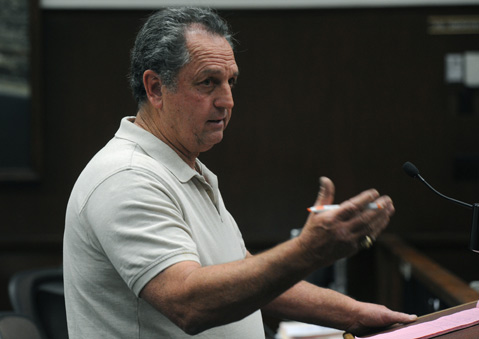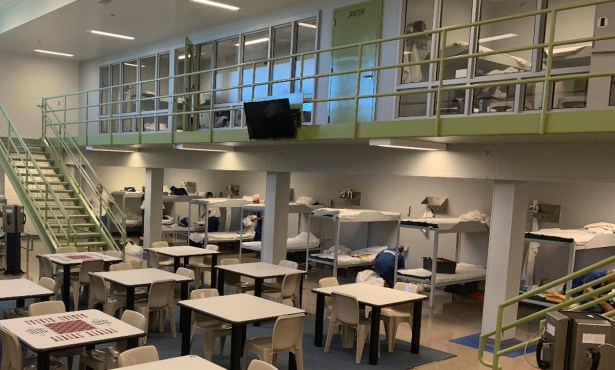One Last Whack at the Pini Piñata
Council Allocates Cash for Tenant Protection

In his last City Council meeting before retiring as Santa Barbara city attorney, Steve Wiley took one last crack at his longtime nemesis, landlord Dario Pini, whose name has become synonymous with slum-like housing in Santa Barbara. Speaking of Pini, Wiley told councilmembers, “For whatever reason, he is a scofflaw.” Pini, Wiley said, has amassed an empire of 400-500 rental units over the past 30 years and has never seen fit to devote enough time or money to keeping them up. Pini properties, Wiley said, are readily apparent to the casual observer by their overflowing trash, peeling paint, lack of landscaping, and missing screens on doors and windows. “Either he doesn’t get it or he doesn’t care,” Wiley said.

Last October, Wiley brought to a close the 30-year game of cat and mouse he’s been playing with Pini for pretty much his entire career at City Hall. In the 1980s, Wiley famously prosecuted Pini for wholesale building-code violations. As his sentence, Pini opted for jail time — also famously — rather than live in one of his rental units as the judge recommended. Wiley won the most recent court battle as well, exacting a $35,000 fine from Pini and securing a commitment from the landlord to conduct a top-to-bottom cleanup of his properties under the supervision of former District Attorney Stan Roden, the court-appointed special master.
This Tuesday, the council voted to set aside $25,000 for the Legal Aid Foundation to represent any Pini tenants who might find themselves forced out by repairs mandated in the court order. Pini, Assistant City Administrator Paul Casey reminded the council, was obligated to pay the relocation costs of any tenants forced to move. Since Pini’s tenants are predominantly poor immigrants, they can’t hire attorneys of their own. And since City Hall set in motion the chain of events that might create dislocations, Casey argued, “It would be good form for us.” Only Councilmember Dale Francisco balked, expressing discomfort that a government entity would set aside funds to facilitate litigation against a private individual. Wiley, who worked for 30 years for City Hall, spent the last 10 as city attorney.
Also retiring after the Tuesday meeting was Marcelo Lopez, a longtime fixture in the City Administrator’s Office. A sharp dresser noted for his even sharper wit, Lopez likewise went out on a high note, having secured a $500,000 grant from the California Department of Justice targeting 120 at-risk teens for the counseling, job training, and tutoring that might keep them from joining gangs. Since 2009, Lopez has served as City Hall’s de facto point person on gang prevention, and to that end, he’s proven successful in securing $2.8 million in state grants for gang prevention and intervention efforts.
Countywide, the state has funneled $5.5 million into Santa Barbara since that time. While City Hall has served as a conduit for many of these funds, most of it has been spent at the direction of Fran Forman and Saul Serrano with the Community Action Commission. The issue of the city’s proposed gang injunction also came up later in the council meeting as Brandon Morse, president of the Santa Barbara Free Thinking Patriots, argued that even without an injunction, major crime was dropping in most categories. He used Police Chief Cam Sanchez’s monthly report to the council as the basis for this claim. Morse also spoke critically of the recent police killing of Brian Tacadena, shot while walking toward an officer while brandishing a nine-inch knife. Morse said Tacadena was mentally ill, and nonlethal means should have been tried first. On the other hand, Morse faulted the officer for hitting Tacadena only once after firing five times.
Sanchez and Mayor Helene Schneider praised Sergeant Ed Olsen for spearheading the city’s “restorative policing” program in dealing with street people and the homeless the past three years. Olsen is stepping down to take an assignment with Internal Affairs, but in the past two years, his program has reunited 73 homeless with their families, got 218 placed, and worked with thousands. In the last year, the Restorative Court program processed 171 people, graduating 52 — meaning they managed to avoid arrest or citation for six months. Those 171, Sanchez highlighted, accounted for a cumulative 6,000 calls for service during their time in Santa Barbara. By diverting those individuals, the department’s street cops have more time, he said, to focus on more pressing issues. Restorative policing, he intimated, was more than feel-good do-gooderism. “It’s police work,” he said.



